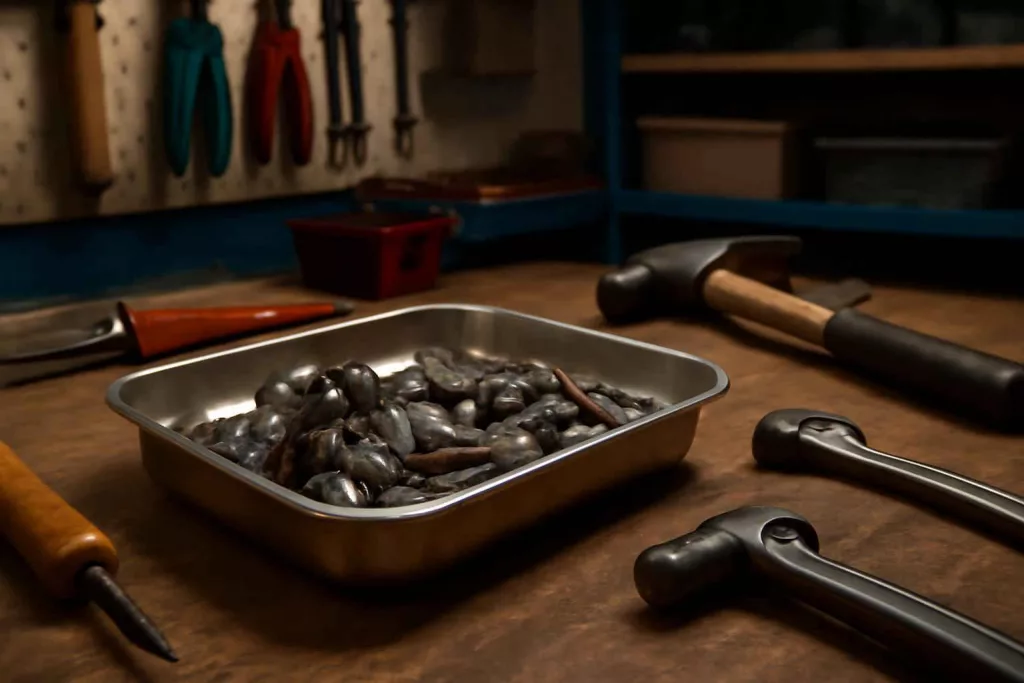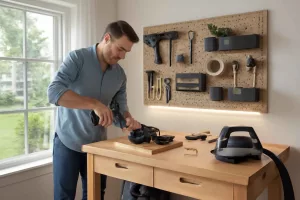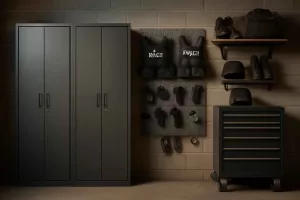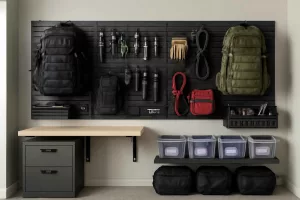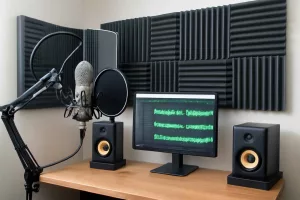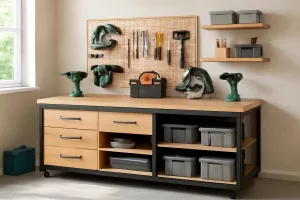Keeping nuts, bolts, screws and small hardware components from rolling off your workspace can be a daily battle in any workshop. A reliable magnetic parts tray can transform your workflow by ensuring metal parts stay exactly where you place them. In this buying guide, we’ll explore the primary considerations when selecting the best magnetic parts trays for workshop use and review top-rated models to help you make an informed purchase. To start shopping immediately, check out this selection of magnetic parts tray options on Amazon.
Whether you’re a seasoned woodworker, auto repair enthusiast, or a general DIY hobbyist, a high-quality magnetic tray is a bottom-funnel investment that pays off every time you avoid lost hardware and interruptions. We’ll cover features like magnet strength, capacity, durability, portability, and more—plus internal links to related resources like our guide on magnetic screwdriver sets for added workshop efficiency.
Why You Need a Magnetic Parts Tray in Your Workshop
Small metal components have a frustrating tendency to vanish under benches, wheels, or deep inside toolboxes. A magnetic parts tray provides a secure receptacle that holds screws, nails, washers and other hardware in place, even if bumped or tilted. By magnetically anchoring these items, you reduce the risk of losing critical parts during assembly or disassembly tasks. This is especially valuable when working on automotive repairs, appliance servicing, or delicate mechanical assemblies.
Beyond loss prevention, these trays speed up workflow. When you know exactly where your fasteners are, you spend less time hunting and more time working. Magnetic trays also minimize clutter by corralling small items into a designated spot. They can be attached to metal surfaces like workbenches, tool chests, and machinery, putting your parts within arm’s reach. If you’ve ever found a stray bolt jammed inside the door panel of a car, you’ll appreciate how these trays save time and headache.
Investing in the best magnetic parts trays for workshop means you choose a tool that lasts for years. Most trays are made from steel or aluminum with a powder-coated finish, ensuring they resist rust and corrosion. This durability is important in shop environments where oil, solvents, and dust are common. In the following sections, we’ll explore the key features that differentiate a good tray from a great one.
Key Features to Look for in Magnetic Parts Trays
Magnet Strength
Not all magnetic parts trays are created equal when it comes to holding power. Magnet strength is measured in Gauss or pull force in pounds. Stronger magnets deliver a more secure grip on heavier items like drill bits or nuts and bolts. Look for trays with at least 20-30 pounds of pull force. Rare-earth magnets, such as neodymium, offer compact size with high magnetic strength. Check the manufacturer’s specifications to ensure the magnet won’t let go when the tray is jostled or lifted.
Tray Capacity and Depth
Tray capacity determines how many parts you can store at once. Capacity is typically listed in fluid ounces or cubic inches. Shallow trays are convenient for small screws but may overflow quickly. Deeper bowls can accommodate larger fasteners but may be bulky. Choose a size that matches your typical project requirements—smaller trays for electronics and precision work, larger trays for auto and heavy-duty repairs.
Material and Durability
The tray material impacts long-term durability and resistance to workshop conditions. Steel trays coated with a rust-resistant finish stand up well to moisture, oils, and solvents. Aluminum options are lighter and won’t rust, but may dent under heavy impact. Inspect welds and seams to ensure quality construction. Some trays include a protective rubberized edging to prevent scratching surfaces.
Portability and Mounting Options
Portability is key for mobile tasks or when you need to move between workstations. A tray with a flat base can sit on any surface, while models with hooks or handles provide easy carrying. Some trays include an integrated hook or loop to hang on pegboards. Others have built-in swivels that allow you to adjust the tray angle. If you work under vehicles or in tight spaces, a compact, hook-style magnetic tray may be ideal.
Top Magnetic Parts Trays on the Market
After evaluating dozens of models, we’ve narrowed down the top 5 magnetic parts trays based on strength, durability, and user feedback.
1. StrongHold 30lb Capacity Magnetic Parts Tray
The StrongHold tray features a neodymium magnet with 30 pounds pull force and a deep bowl capable of holding over 12 ounces of small parts. Its powder-coated steel design resists corrosion, and the rubber edge protects painted surfaces. Customers praise its unwavering hold on heavy bolts and bits. Available in compact and standard sizes for different project scales.
2. ShopPro Aluminum Magnetic Parts Organizer
This lightweight aluminum tray offers a 20-pound pull force with a protective rubber lining. Its shallow bowl is perfect for precision tasks, while the integrated hook lets you hang it on shelves or racks. Ideal for electronics repair and fine mechanical work. The anodized finish ensures longevity in rugged conditions.
3. MasterTech Heavy-Duty Magnetic Parts Bowl with Swivel
MasterTech’s bowl includes a swivel base that allows 360-degree rotation, making it easy to access parts without lifting the tray. With a 25-pound pull rating, it holds medium-to-large fasteners securely. The stainless steel bowl is dishwasher-safe for easy cleaning of grease and grime.
4. ProMagnetic Nested Tray Set
For workshops handling a variety of part sizes, the ProMagnetic set includes three nested trays—small, medium and large. Each has its own magnet pad, and the nesting design saves storage space when not in use. Available in steel with a protective coating, rated at 15-30 pounds across the sizes.
5. FlexiMag Compact Hook Magnetic Tray
FlexiMag’s compact tray is designed for hanging. The integrated hook latches onto metal shelves or toolboxes, making it convenient for quick access. Rated at 18 pounds pull force, its compact 8-ounce capacity is ideal for light projects, wiring harnesses, or small hardware.
How to Use Magnetic Parts Trays Effectively
Placement is crucial. Position your tray close to the work site, within direct line of sight and reach. If you’re disassembling assemblies, pre-sort parts by type—screws in one tray, washers in another. This speeds reassembly and prevents cross-contamination of hardware sizes. For multi-step repairs, use multiple trays and label them with masking tape or removable tags.
Occasionally, you may need to shake the tray to reseat parts on the magnet, especially after heavy contact or if the bowl has loose debris. For large or oddly shaped items, mount the tray on vertical metal surfaces such as tool chests or machinery bodies to keep parts visible and secure. Always avoid overloading the tray beyond its rated capacity, as this can weaken magnet performance over time.
Combining your magnetic trays with other storage solutions—like a DIY rolling tool cart—creates a versatile mobile workstation. You can slide trays into built-in drawers or hooks for a seamless workflow.
Maintenance and Care Tips for Your Magnetic Tool Trays
Regular cleaning keeps magnet performance at its peak. Remove all hardware and wash the tray with mild soap and warm water. Dry thoroughly to prevent rust. For stubborn oil or grease, soak the tray in a degreaser solution before rinsing. Avoid abrasive cleaners that can strip protective coatings.
Inspect the magnet for chips or cracks, as damage can reduce hold strength. If your tray uses rare-earth magnets, avoid high-heat exposure above 176°F (80°C), which can permanently demagnetize them. Store trays in a dry environment or hang them on a pegboard to minimize contact with wet surfaces. If rust appears, use fine-grit sandpaper to smooth the area and apply a rust-inhibiting primer and paint.
FAQs about Magnetic Parts Trays
Q: Can a magnetic parts tray hold non-ferrous materials like plastic anchors or brass fittings?
A: Magnetic trays only attract ferrous metals like steel and iron. Use small plastic bins or non-magnetic organizers for non-ferrous items to avoid misplaced parts.
Q: Will oil or grease reduce the effectiveness of the magnet?
A: A thin film of oil or grease on metal parts doesn’t significantly impact magnet performance. However, thick layers can create a barrier. Keep trays clean by wiping them down after greasy jobs.
Q: How do I remove stubborn screws or bits stuck to the magnet?
A: Gently tap the bottom of the tray on a hard surface or slide a non-metallic tool under the part. Avoid prying with metal tools that could scratch the tray.
Q: Are magnetic trays safe to use around electronic devices?
A: Strong magnets can interfere with sensitive electronics and data storage. Keep trays at a safe distance from magnetic media, monitors, and circuit boards to prevent data loss or display distortion.
Q: Can I stack multiple magnetic trays?
A: Only stack trays if they are designed for nesting to avoid excessive magnetic attraction that could damage trays or make separation difficult.
Conclusion
Upgrading to one of the best magnetic parts trays for workshop use will streamline your workflow, reduce lost hardware, and keep your workspace tidy. Whether you need a heavy-duty 30-pound pull force bowl or a compact hook-style tray for light tasks, the models reviewed here cover every need. For further organization tips, explore our guide on shop vac attachment kits to maintain a clean workspace. Ready to equip your bench? Find the perfect magnetic parts tray today and take your workshop efficiency to the next level.
